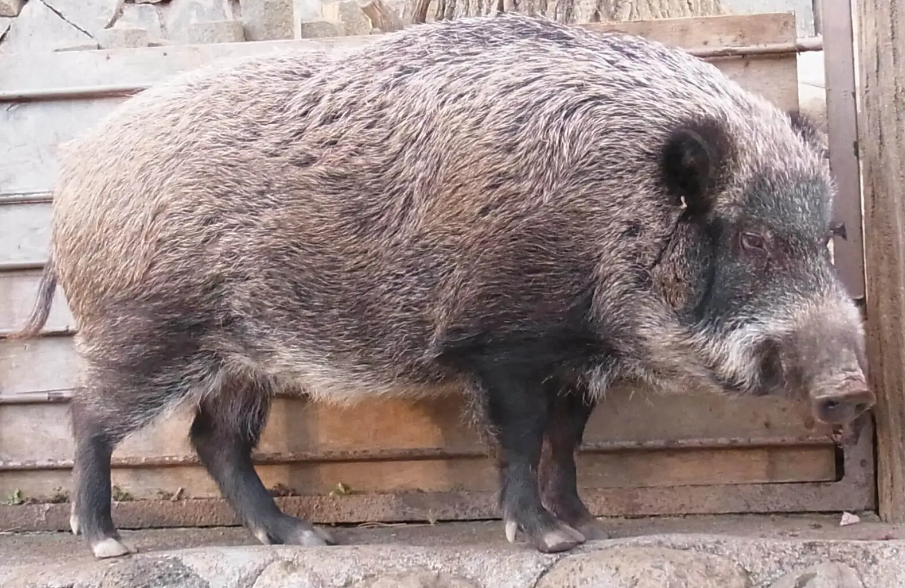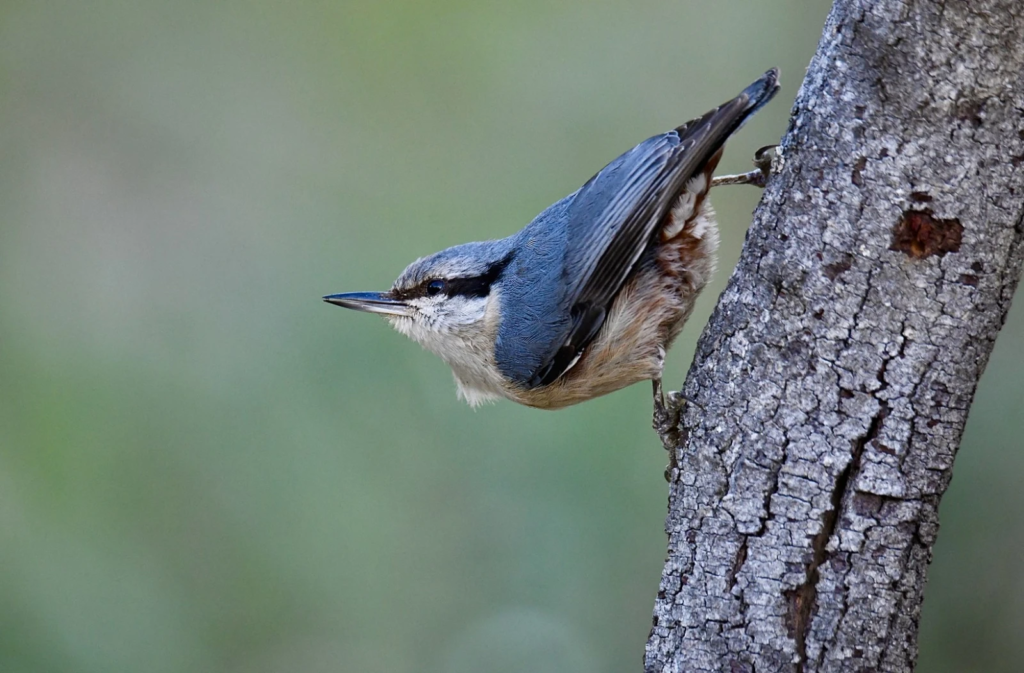1. Japanese Pigs (or Chernobyl Boars)

Animalia
After the Fukushima disaster, researchers discovered that Japanese pigs have a surprising resilience to radiation. These pigs, living near the Fukushima nuclear power plant, were found to have evolved traits that made them more resistant to radiation exposure. While humans and other animals in the area suffered radiation poisoning, the pigs appeared to be thriving. Studies suggest that their thicker skin, along with specific genetic mutations, may help them withstand the harmful effects of radiation. Their adaptability to such extreme environments could offer valuable insights into how animals might survive in radioactive zones.
2. Chernobyl Wolves (Mutating for Survival)

YouTube
Wolves living in the Chernobyl exclusion zone have thrived in the radioactive wasteland, showing surprising adaptability. These animals have become larger, more resilient, and are showing higher reproductive rates compared to their counterparts outside the exclusion zone. Researchers have observed that the Chernobyl wolves have developed a more robust immune system, and while the radiation levels in the area are still high, they have adapted in ways that other animals cannot. Genetic studies have also revealed signs of evolutionary changes, such as mutations in their DNA that help them handle the radiation stress more effectively.
3. The European Red Fox (Adapting in Chernobyl)

Flickr
The European red fox has also managed to adapt to the radioactive environment of Chernobyl. These animals are often found hunting in the forested areas near the exclusion zone. Though they carry mutations, they appear to be surviving better than expected. The high levels of radiation affect their health, but foxes are known for their adaptability and can thrive in changing environments. Researchers have found that some foxes have developed thicker coats and stronger immune systems, which help them fend off the harmful effects of radiation and ensure their survival in a toxic environment.
4. The Chernobyl Przewalski’s Horse (A Natural Resilience)

Animalia
The Przewalski’s horse, a species that was reintroduced to Chernobyl after the nuclear disaster, is thriving in the exclusion zone. Despite being exposed to high levels of radiation, these horses have adapted remarkably well, showing no signs of major health problems. Researchers attribute their survival to their natural resilience and ability to adapt to extreme environments. The horses’ populations have increased in the Chernobyl area, where they graze on the abundant vegetation, much of which is likely contaminated. However, the horses have proven to be one of the few species capable of surviving long-term exposure to radiation.
5. Mice in Chernobyl (Radiation-Resistant Genetics)

Flickr
Mice living in the Chernobyl exclusion zone have been studied extensively due to their ability to survive high levels of radiation. These small mammals have developed genetic mutations that help them repair radiation damage more effectively than their counterparts outside the exclusion zone. Scientists have observed that these mice exhibit increased resistance to cancer and other radiation-induced illnesses. Additionally, their high reproduction rates and rapid adaptation to the environment make them an important model for studying the effects of radiation on genetics and the potential for species to adapt in radioactive environments.
6. The Eurasian Nuthatch (Coping with Radiation)

Animalia
Birds, particularly the Eurasian nuthatch, have managed to adapt to the toxic conditions of the Chernobyl zone. The Eurasian nuthatch is one of the many bird species that have become part of the ecosystem in the exclusion zone, despite the radioactive contamination. These birds have adapted to the lack of human activity and the presence of abundant food sources, such as insects and seeds. Though they face radiation exposure, their shorter lifespan and faster breeding cycles allow them to cope better with the environmental challenges posed by the radioactive environment.
7. Chernobyl’s Feral Cats (Thriving in a Toxic Zone)

Flickr
Feral cats living in the Chernobyl exclusion zone have also adapted to the radioactive environment. Despite the high levels of radiation in the area, these cats have developed a high tolerance to radiation, possibly due to genetic mutations that have helped them survive. They have established their own ecosystem, feeding on the animals that inhabit the area. While studies show some of these cats carry high levels of radioactive material, their populations remain stable, demonstrating how resilient and adaptable these animals are in a harsh and contaminated environment.
8. The American Cockroach (A Radiation Survivor)

Flickr
The American cockroach is one of the few species to thrive in radioactive environments. After the atomic bombings in Japan and in nuclear testing zones, these insects have shown remarkable resistance to radiation. They can survive doses of radiation that would kill other animals, possibly due to their high rate of cell regeneration and their tough exoskeletons. These cockroaches have been shown to adapt to extreme environments, and their resilience has made them subjects of interest in studies about survival in high-radiation conditions, contributing to our understanding of life’s ability to thrive in the most hostile environments.
9. Chernobyl’s Wild Deer (Adaptation to a Toxic Environment)

Flickr
Wild deer living in the Chernobyl exclusion zone have demonstrated remarkable adaptability to radiation. While studies have found genetic mutations in these animals, they have also shown an ability to reproduce in the contaminated environment. Culling programs in the area have been unsuccessful in reducing deer populations, as they have adapted to the radiation, with some even showing greater fertility. Their adaptation strategies have made them one of the more successful mammals in surviving in a radioactive environment, alongside other animals in the Chernobyl zone.
10. The Common Raven (Thriving in Chernobyl)

Flickr
The common raven has adapted well to the radioactive environment in Chernobyl. These birds have evolved to live in areas where food is abundant and human interference is minimal. Ravens are scavengers, and the lack of human presence has allowed them to thrive in the Chernobyl zone. While they do face radiation exposure, ravens are known for their intelligence and ability to adapt to changing environments. In the exclusion zone, they can often be seen hunting for small animals and foraging for food, proving that some species can adapt and thrive in conditions that would be lethal to others.
11. The Common European Hedgehog (Radiation Survivors)

Wikimedia Commons
European hedgehogs have adapted surprisingly well to life in the Chernobyl exclusion zone. Despite the radiation levels in the area, they have been able to maintain stable populations. Hedgehogs have robust immune systems that may contribute to their survival, as well as natural behaviors that help them avoid the most contaminated areas. Their ability to survive in an environment with high radiation exposure highlights how certain species can adapt to the challenges posed by radiation, demonstrating that some animals can endure and even thrive under extreme conditions.
12. The Eastern Gray Kangaroo (Adaptation to Fallout)

Animalia
The Eastern Gray Kangaroo, native to Australia, has shown remarkable adaptability to environments contaminated by radiation, particularly following nuclear testing in the region. These kangaroos are capable of surviving in areas where many other species would struggle, largely due to their efficient foraging habits and ability to travel vast distances in search of food. Their thick fur and strong immune systems help protect them from environmental stressors, including radiation. While there’s little direct evidence of long-term radiation effects on their populations, kangaroos have demonstrated the ability to adapt to harsh, changing conditions, offering an insight into how some species can adjust to radioactive environments.
13. The Brown Rat (Thriving in Radioactive Zones)

Animalia
Brown rats are well known for their resilience and adaptability, and the radioactive environments around Chernobyl have proven no exception. These rats have not only survived but thrived in the exclusion zone, showing little difference in reproduction rates compared to rats in non-contaminated areas. Their resistance to radiation is believed to come from their fast reproduction cycles, allowing them to rapidly adapt to changing conditions. Brown rats in these areas have become a significant part of the ecosystem, scavenging food and thriving in an environment that would be lethal to most other species.


